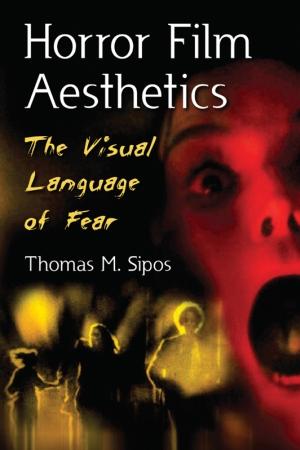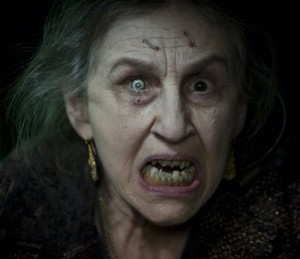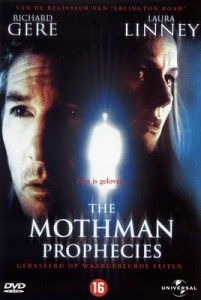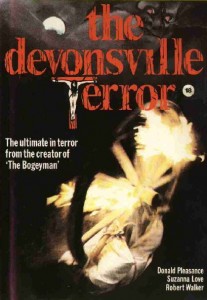 With this post we continue and conclude our interview with Thomas M. Sipos, author of Horror film Aesthetics: The Visual Language of Fear (McFarland, 2010). Part 1 can be read here.
With this post we continue and conclude our interview with Thomas M. Sipos, author of Horror film Aesthetics: The Visual Language of Fear (McFarland, 2010). Part 1 can be read here.
TheoFantastique: To continue our discussion of definitions, how do you propose readers of film sort out confusing overlaps between horror and science fiction, perhaps most evident in examples like 1950s horror/sci-fi or more recently in films like Alien?
Thomas Sipos: Someone defined science fiction as “a story about a problem, or a solution to a problem, that originates from an as yet unrealized, but plausible, scientific discovery.”
I’ve tried to discover who said it. Some science fiction writers have speculated to me about the definition’s author, but no one could say for sure. Yet I believe it’s the most accurate definition of science fiction.
By this definition, science fiction is practically non-existent in film and TV. Many TV shows use science fiction icons — spaceships, computers, aliens, time machines — but the “science” is gobbledygook. The Star Trek shows (from what little I’ve seen) are part adventure, part soap opera. I caught a scene where Worf was grappling with the problems of being a single father. Most of Star Trek‘s “aliens” are humans, despite their diversity of head bumps, mottled skin, or pointy ears.
Compare the human “aliens” in Dr. Who or Star Trek to the truly alien aliens in such novels as Asimov’s The Gods Themselves or Clarke’s 2001: A Space Odyssey. Science fiction, being a genre of serious scientific speculation, works better in novels than on film. You can discuss science in novels, whereas film is a visual medium; speeches don’t work. Horror works better in film than in books. As an emotive genre, horror benefits more from atmospheric photography and eerie music than does science fiction.
The old Twilight Zone, the old Outer Limits, The X-Files — these were horror shows, not science fiction. The science is often weak or nonexistent, but always there is fear, and usually from an unnatural threat.
Good science fiction cares about getting the science right. Horror/sci-fi doesn’t, since it’s not about the science; it’s about chainsaw wielding astronauts (e.g., Inseminoid, aka Horror Planet) or drooling aliens. Science fiction has scientists. Horror has mad scientists.
Setting a story in the future does not make it science fiction. This is why some fans prefer the terms futurist or speculative fiction. (I think Robert Heinlein preferred the latter.) These broader terms include stories where science is not a requirement.
Some science fiction fans reject the term sci-fi. That’s why I use it. Horror/sci-fi emphasize that I’m referring to a horror subgenre, rather than anything to do with science fiction.
TheoFantastique: At one point in your discussion you make an important distinction between the horror witch and the Wiccan Witch. I am surprised and perplexed by the battles in pop culture between various parties over depictions of the Witch in film (not to mention television and literature) wherein all parties seem to miss the distinction between the fictive construct and that of the real world spirituality. Why do you think so many miss what horror (and fantasy) is trying to do with this figure?
 Thomas Sipos: By horror witch, I refer to the familiar icon of a woman in a peaked black hat, black cloak, broomstick, black cat, and cauldron. There are variations. Sometimes she’s a crone with green skin, sometimes she’s young and sexy. But the basic parameters are the same.
Thomas Sipos: By horror witch, I refer to the familiar icon of a woman in a peaked black hat, black cloak, broomstick, black cat, and cauldron. There are variations. Sometimes she’s a crone with green skin, sometimes she’s young and sexy. But the basic parameters are the same.
Some Wiccans don’t mind the icon. Others complain that the Horror Witch misrepresents real-life Wiccans. It’s a silly complaint, for the same reason that it would be silly for real-life scientists to complain that Dr. Frankenstein misrepresents the work that goes on at Harvard Medical School.
Why do some Wiccans dislike the Horror Witch? George Orwell had part of the answer. Language affects perception. In 1984, Ingsoc (the ruling party) tried to control thought by replacing contemporary English words with Newspeak. Today everyone tries to control language.
Some Wiccans want to own the term “witch,” and have it only apply to their conception, as a means of shaping everyone’s perception of a witch. Yet there are Wiccan witches, horror witches, Satanist witches, and other kinds. Many people use the term; no one owns a copyright or trademark on it.
Some Wiccans argue that Satan is a Christian concept, and Wicca is older, so there can’t be such a thing as a Satanic witch. Yet some people do call themselves Satanic witches. And Satanist Nikolas Schreck argues that the concept of Satan predates Christianity; that “a dark god” in opposition to the established order is a pagan concept, even if these gods were known by other names (e.g., Flowers from Hell: A Satanic Reader).
Perhaps some Wiccans are possessive of the term “witch” because of Wicca’s controversial origins. Some adherents claim that Wicca is thousands of years old. Others believe that it’s a modern religion (50-60 years old), having little or no historical ties to medieval witchcraft.
In the 1979 edition of [Margot Adler’s] Drawing Down the Moon: Witches, Druids, Goddess-Worshipers, and Other Pagans in America Today, Wiccan high priestess Mary Nesnick says: “Fifty percent of modern Wicca is an invention bought and paid for by Gerald B. Gardner from Aleister Crowley. Ten percent was ‘borrowed’ from books and manuscripts like Leland’s text Aradia. The forty remaining percent was borrowed from Far Eastern religions and philosophies, if not in word, then in ideas and basic principles.”
Witches have been portrayed as villains in horror, but so have New Agers and Christians. New Agers are often portrayed as flakes or frauds (e.g., the “Eclipse” episode of She-Wolf of London, aka Love and Curses). And horror abounds with evil Christians: phony faith healers, lechers, charlatans, and hypocrites (e.g., the “Faith Healer” episode of Friday the 13th: The Series).
TheoFantastique: I also enjoyed your discussion of the appeal of horror. You take exception to the dominant explanation of this in terms of catharsis, and that from a Freudian perspective. I must admit that I’m not much of a fan of Freudian interpretation of horror either and find its prevalence troubling at times. Why do you critique the catharsis explanation, and can you discuss what you offer as an alternative in terms of metaphysical transcendence?
Thomas Sipos: Catharsis implies purging ourselves of something disagreeable. That’s only sometimes true of horror films.
The unnatural is not only threatening, it is alluring. Halloween is beautiful. Gray aliens are fascinating. To witness the unnatural is like gazing into the Grand Canyon; scary but also awesome. Seeing something greater than ourselves fills us with awe, fear, sometimes even reverence. The ancient Hebrews trembled in God’s presence.
 Catharsis may explain part of the appeal for naturalistic psycho gorefests, but at its best, horror is more than shocks and gore. The better episodes of The Twilight Zone and The X-Files, and films like The Ring, Fire in the Sky, The Grudge, and The Mothman Prophecies inspire a creepy fear — a quiet, cold and trembling realization that “the world is not as our minds believe,” and that’s mind-boggling. Consider the scientist who sat mesmerized, even smiling, upon seeing the monster in The Relic.
Catharsis may explain part of the appeal for naturalistic psycho gorefests, but at its best, horror is more than shocks and gore. The better episodes of The Twilight Zone and The X-Files, and films like The Ring, Fire in the Sky, The Grudge, and The Mothman Prophecies inspire a creepy fear — a quiet, cold and trembling realization that “the world is not as our minds believe,” and that’s mind-boggling. Consider the scientist who sat mesmerized, even smiling, upon seeing the monster in The Relic.
Clive Barker has spoken of horror as a glimpse at divinity. Kirk J. Schneider says much the same in his book, Horror and the Holy. I don’t endorse the specifics of Barker or Schneider’s views, but I think we’re all groping in the same direction.
Jeepers Creepers features an unnatural threat as metaphysical transcendence. At first we think the villain must be some psycho redneck; that we’re watching a naturalistic psycho gorefest. Then the villain demonstrates nearly superhuman powers, and we suspect that he’s an uberpsycho. But then — he sprouts wings!
That is a creepy-scary moment. Everything changes in that instant. The unnatural intrudes upon our reality in a manner beyond that of an uberpsycho. Suddenly, “the world is not as our minds believe.”
Such moments are hard for filmmakers to do. Audiences are jaded. Vampires and zombies are too familiar to be easily creepy, so they often rely on shocks and gore. Whereas Jeepers Creepers pulled me in with great characters and tense situations, had me expecting one thing, then caught me off guard with its unnatural threat. It’s one of the past decade’s top horror films.
TheoFantastique: I agree wholeheartedly. I think it’s a great and neglected horror film, with an almost gargoyle-like creature that is both repulsive and fascinating.
Thomas Sipos: Kudos also to Shyamalan’s The Sixth Sense and the Japanese for revitalizing ghosts, putting a new and unfamiliar spin on them, reinvigorating their unnaturalness — at least for a few years. Innovative ghosts of a decade ago have become clichés again. So familiar that they feel natural rather than creepy.
I wonder if theists, of whatever faith, are more responsive to unnatural threats, whereas atheists more often enjoy naturalistic psycho gorefests. I found Samara creepier and more frightening than Jigsaw; atheists may feel otherwise.
TheoFantastique: One final question, Thomas. You state that “[h]orror does not inherently support any particular ideology.” I agree, but many on both sides of the debate would say that horror is antithetical to certain religious or political perspectives. How would you respond?
Thomas Sipos: I identify four appeals of horror: 1. Catharsis; 2. Metaphysical transcendence; 3. Sympathy for The Other; and 4. Ideological Palette.
 Horror and its icons can convey any ideology. The Devonsville Terror and A Day of Judgment are both low-budget horror films, shot in the early 1980s, in small towns, with crude production values and mostly mediocre-to-poor actors. The stories are similar: a supernatural force comes to town to punish evildoers. In the former, a witch’s ghost avenges the male-chauvinist descendants of the town patriarchs who burned her at the stake 300 years ago. In the latter, the Grim Reaper claims the souls of sinners who’ve shunned Christian teachings. Similar films, with opposing worldviews. Yet they’re about equal in terms of quality, entertainment value, and effectiveness in conveying their messages.
Horror and its icons can convey any ideology. The Devonsville Terror and A Day of Judgment are both low-budget horror films, shot in the early 1980s, in small towns, with crude production values and mostly mediocre-to-poor actors. The stories are similar: a supernatural force comes to town to punish evildoers. In the former, a witch’s ghost avenges the male-chauvinist descendants of the town patriarchs who burned her at the stake 300 years ago. In the latter, the Grim Reaper claims the souls of sinners who’ve shunned Christian teachings. Similar films, with opposing worldviews. Yet they’re about equal in terms of quality, entertainment value, and effectiveness in conveying their messages.
Horror is thematically elastic. The film Society depicts the rich as monsters who eat the poor. My novel Vampire Nation depicts Communists in Cold War Transylvania as vampires. Yet my screenplay/book, Pentagon Possessed: A Neocon Horror Story, depicts demonic forces behind the Patriot Act and America’s entry in the Iraq War. So I’ve used horror icons to convey both “right” and “left” messages, though I think my books are ideologically consistent.
That is horror’s appeal as an Ideological Palette. Its icons can serve as a metaphor for any philosophy or political perspective.
Horror’s other appeal, Sympathy for The Other, is that the unnatural is not always an object of fear, but can also be a friend (Elvira, The Munsters, The Curse of the Cat People), a protector (“The Boy Who Cried Werewolf” episode of Werewolf, or the “Mr. Swlabr” episode of Monsters), an avenger (The Initiation of Sarah, Horror High aka Twisted Brain, The Craft), or a role model (some murderers claim to have emulated horror films — and odds are that at least some of them aren’t lying).
That monsters can be sympathetic (rather than threatening) is another argument against the notion that horror is always cathartic. Halloween monsters can be alluring (inspiring metaphysical transcendence), but they can also be a good buddy.
TheoFantastique: Thomas, thank you again for discussing your book.





2 Responses to “Thomas M. Sipos – Horror Film Aesthetics: The Visual Language of Fear (Part 2)”